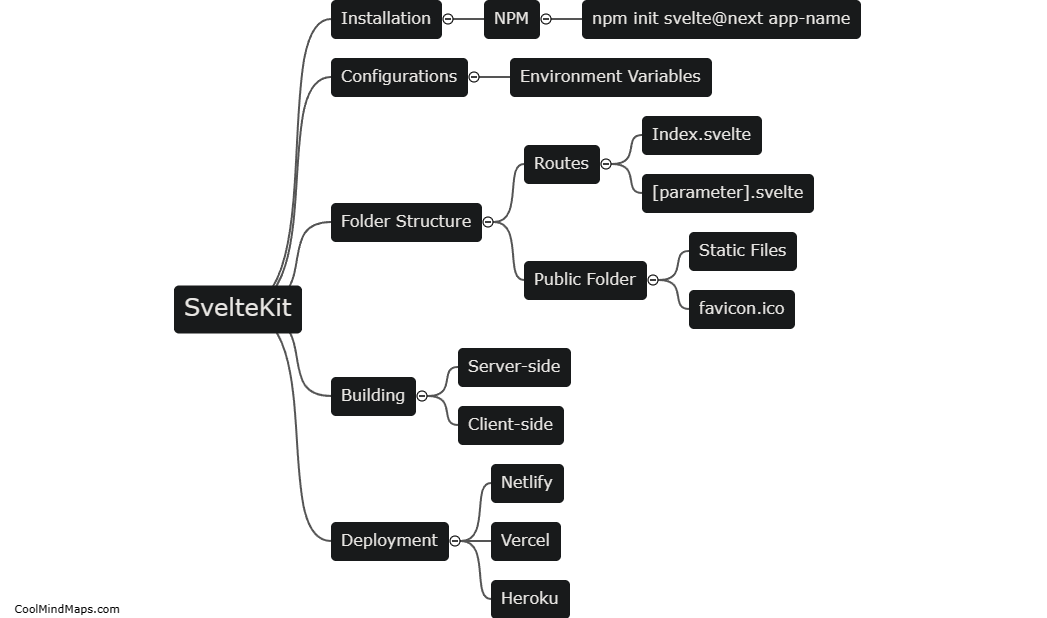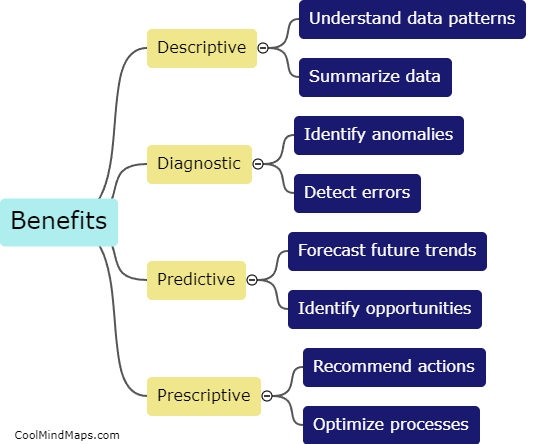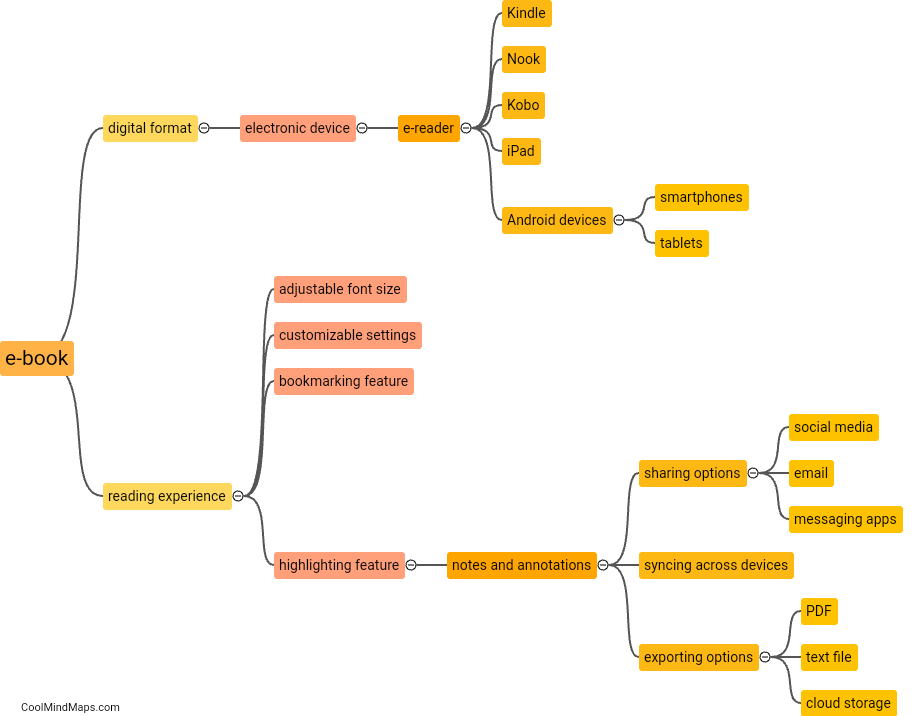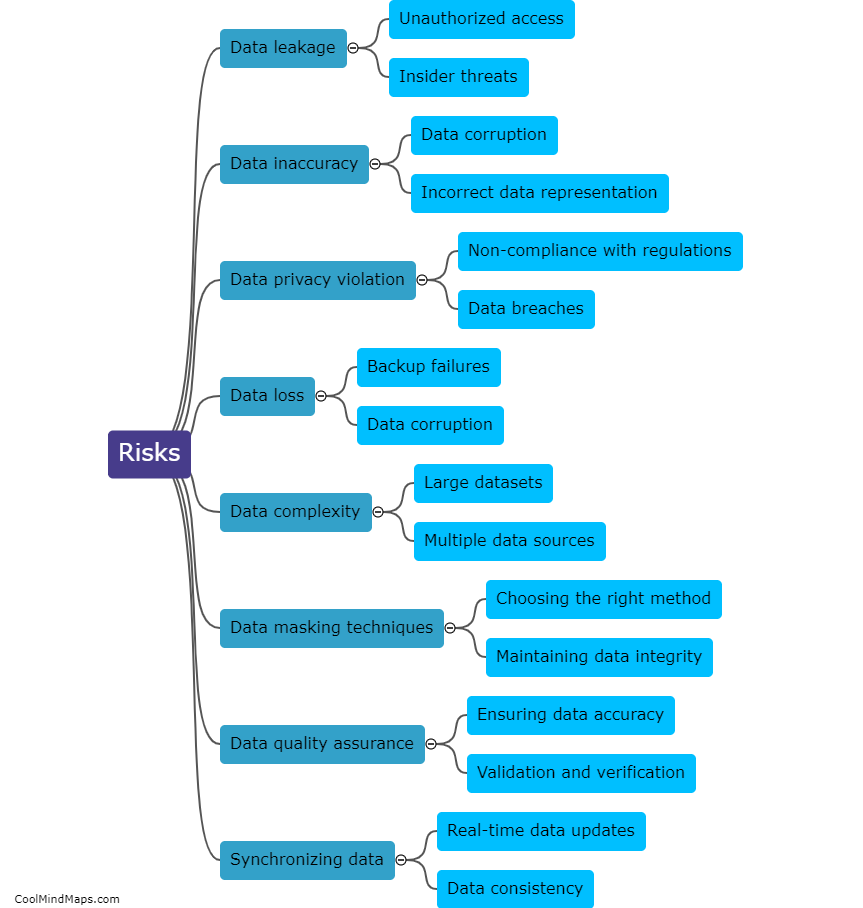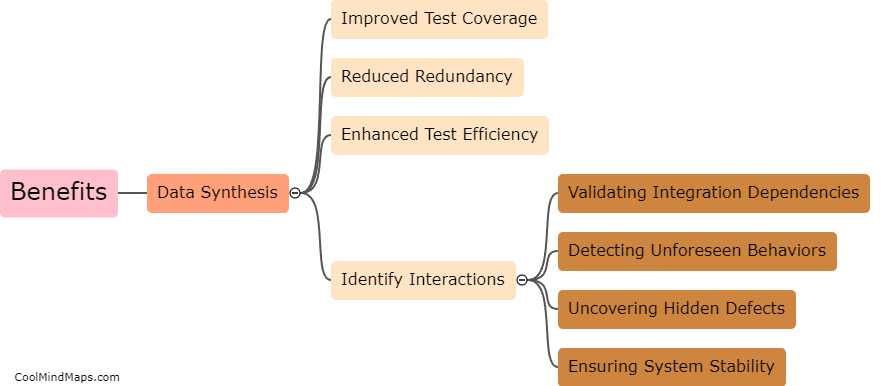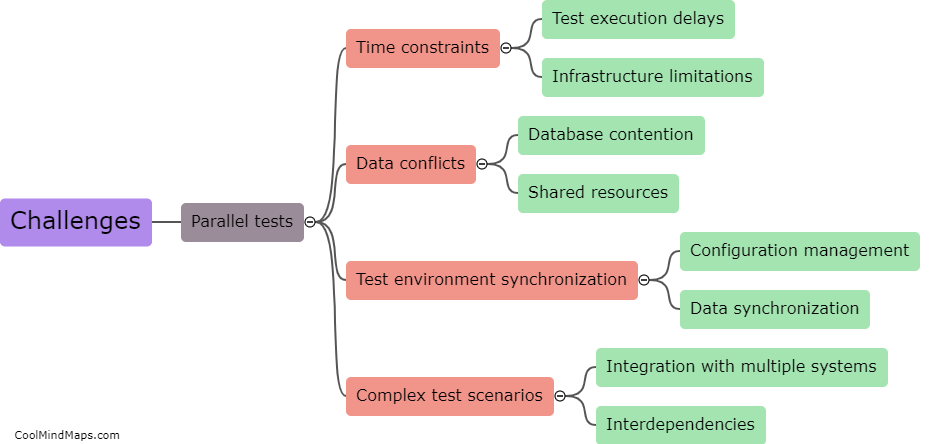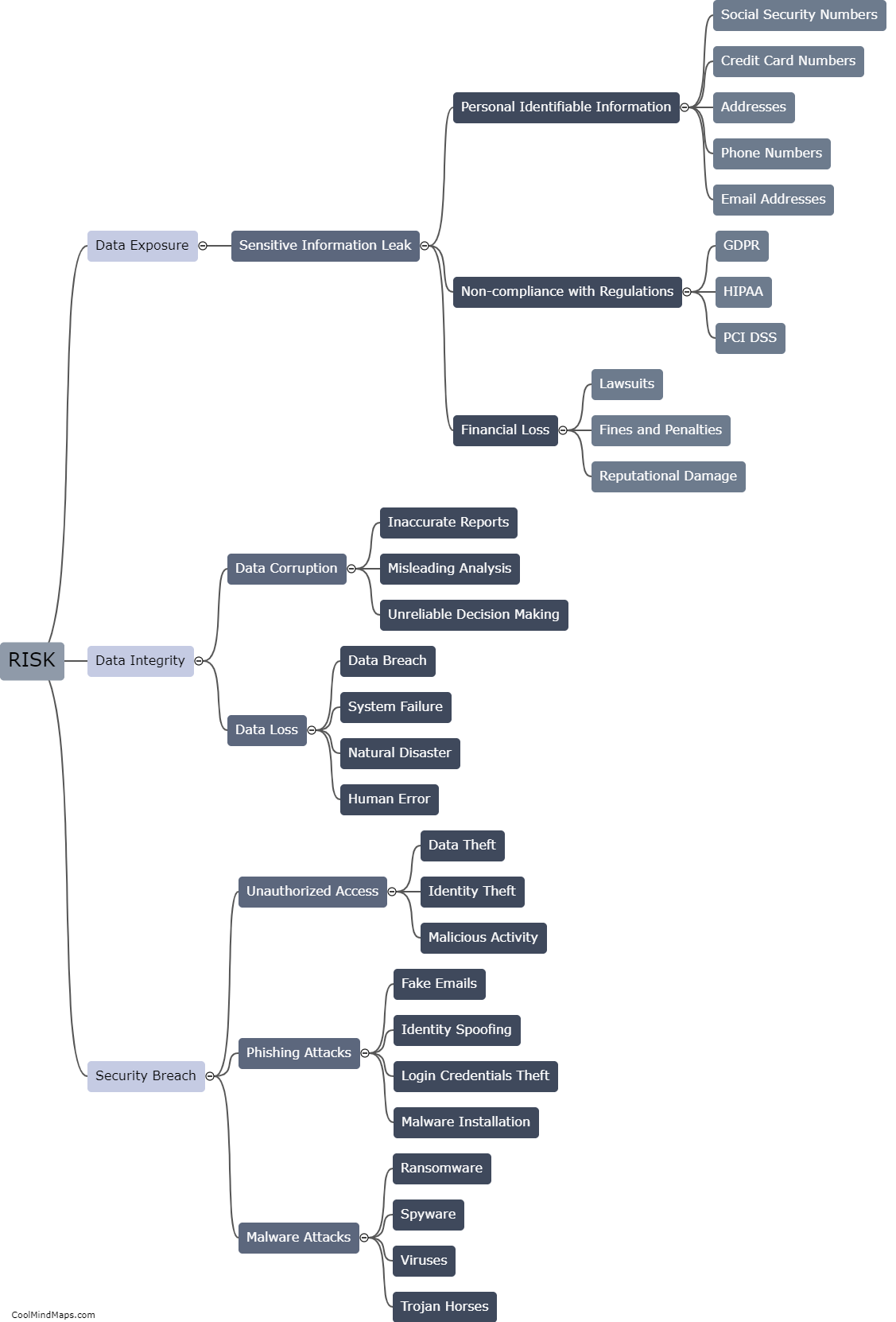What is data synthesis in a test environment?
Data synthesis in a test environment refers to the process of creating realistic and representative data sets for testing purposes. It involves combining and transforming various types of information to simulate real-world scenarios. The goal of data synthesis is to generate test data that accurately reflects the characteristics and complexity of the production environment. This involves manipulating raw data, applying statistical algorithms, and incorporating domain knowledge to produce relevant and diverse test cases. By synthesizing data, organizations can ensure that their systems are thoroughly tested and can handle different scenarios before being deployed into the live environment.
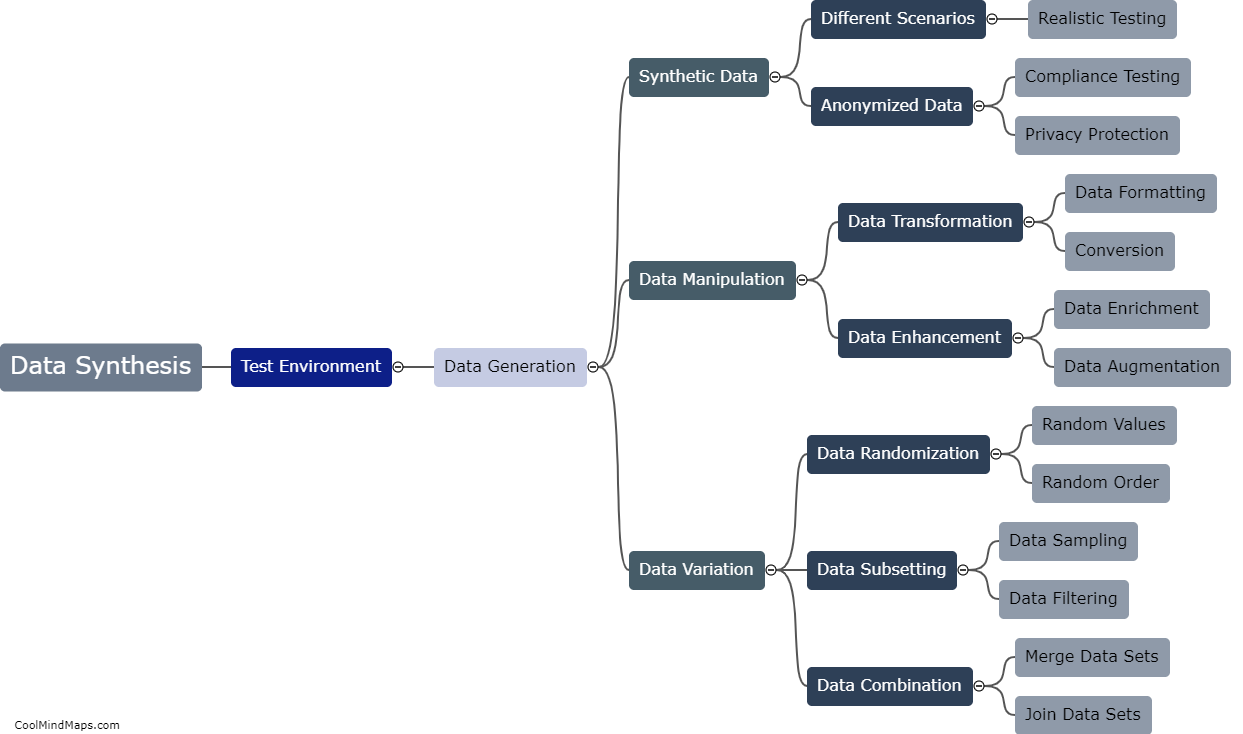
This mind map was published on 27 July 2023 and has been viewed 67 times.

